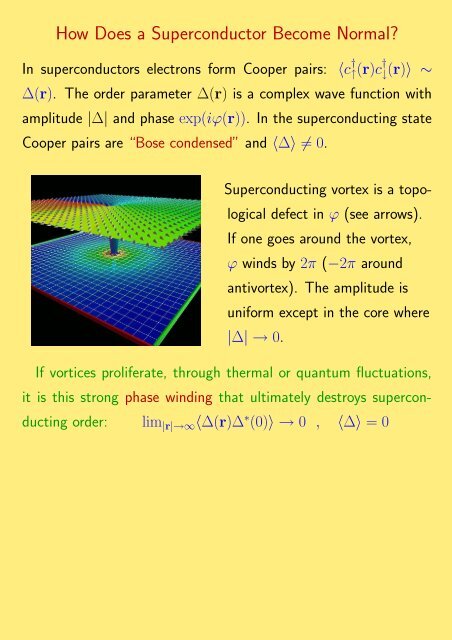QED3 Theory of High Temperature Superconductors ⢠What is the ...
QED3 Theory of High Temperature Superconductors ⢠What is the ...
QED3 Theory of High Temperature Superconductors ⢠What is the ...
Create successful ePaper yourself
Turn your PDF publications into a flip-book with our unique Google optimized e-Paper software.
How Does a Superconductor Become Normal?<br />
In superconductors electrons form Cooper pairs: 〈c † ↑(r)c † ↓(r)〉 ∼<br />
∆(r). The order parameter ∆(r) <strong>is</strong> a complex wave function with<br />
amplitude |∆| and phase exp(iϕ(r)). In <strong>the</strong> superconducting state<br />
Cooper pairs are “Bose condensed” and 〈∆〉 ≠ 0.<br />
Superconducting vortex <strong>is</strong> a topological<br />
defect in ϕ (see arrows).<br />
If one goes around <strong>the</strong> vortex,<br />
ϕ winds by 2π (−2π around<br />
antivortex). The amplitude <strong>is</strong><br />
uniform except in <strong>the</strong> core where<br />
|∆| → 0.<br />
If vortices proliferate, through <strong>the</strong>rmal or quantum fluctuations,<br />
it <strong>is</strong> th<strong>is</strong> strong phase winding that ultimately destroys superconducting<br />
order: lim |r|→∞ 〈∆(r)∆ ∗ (0)〉 → 0 , 〈∆〉 = 0
















